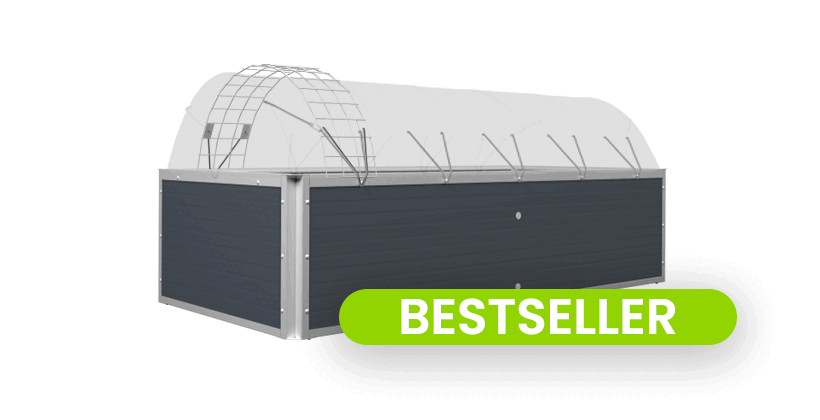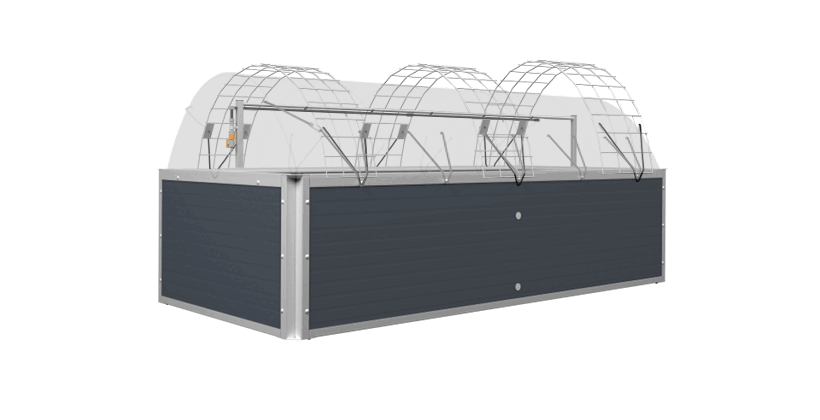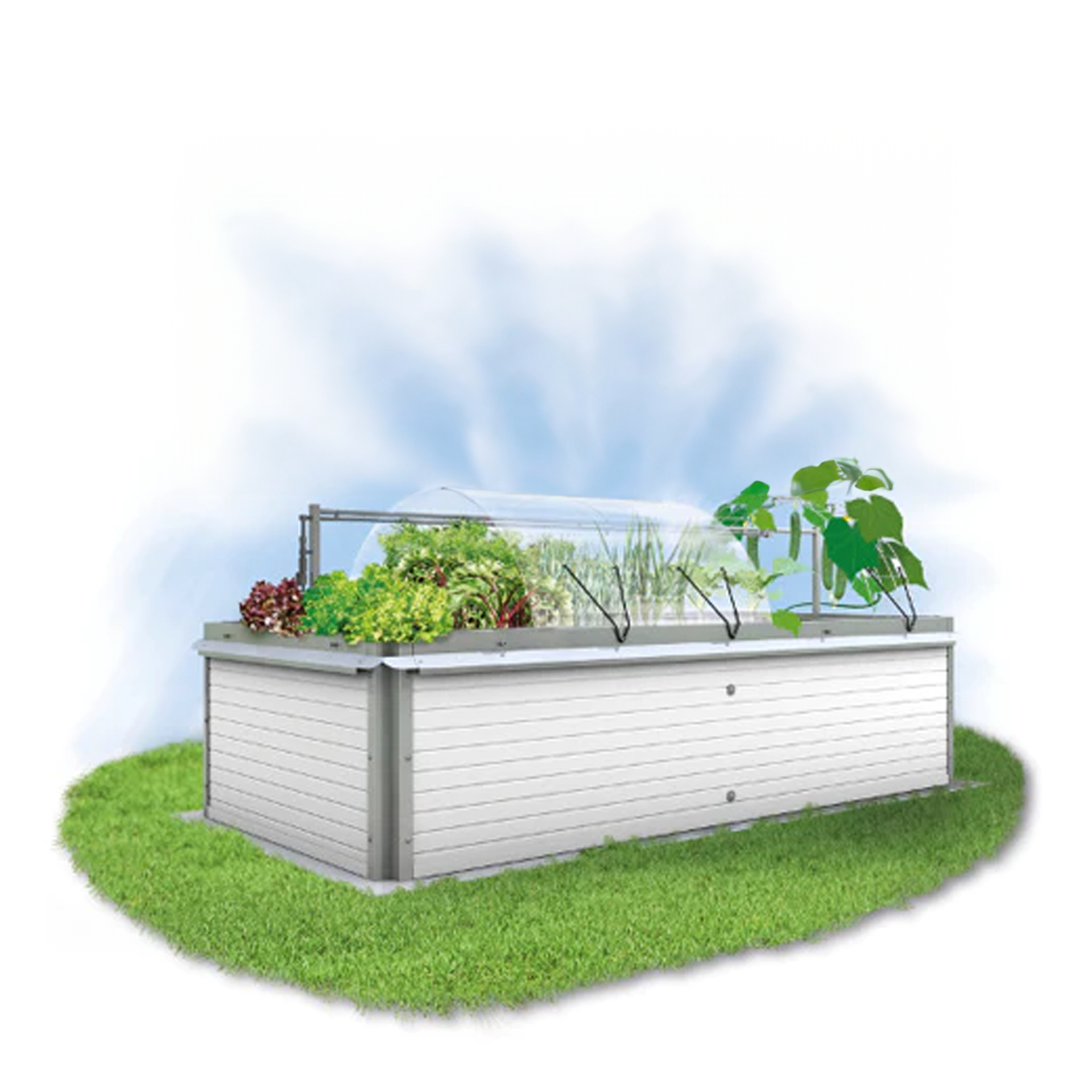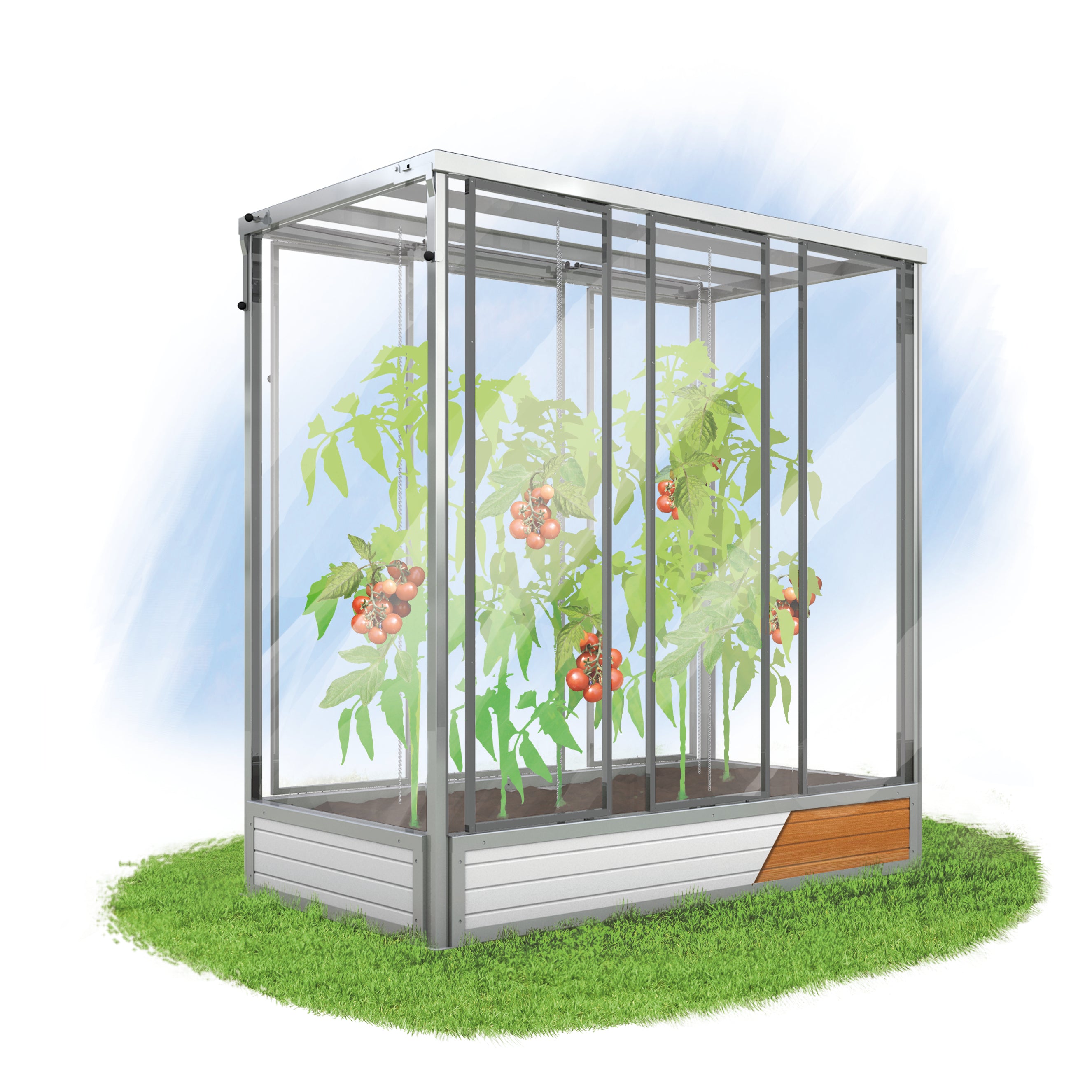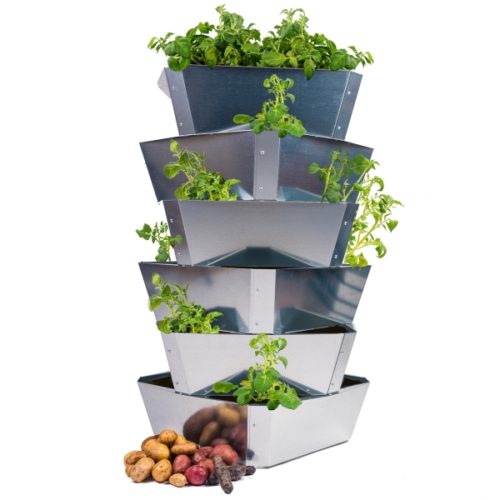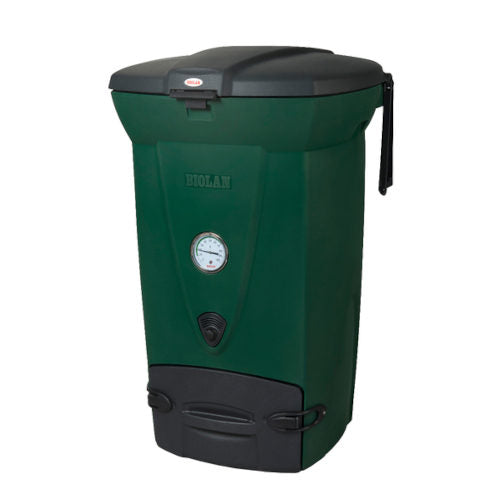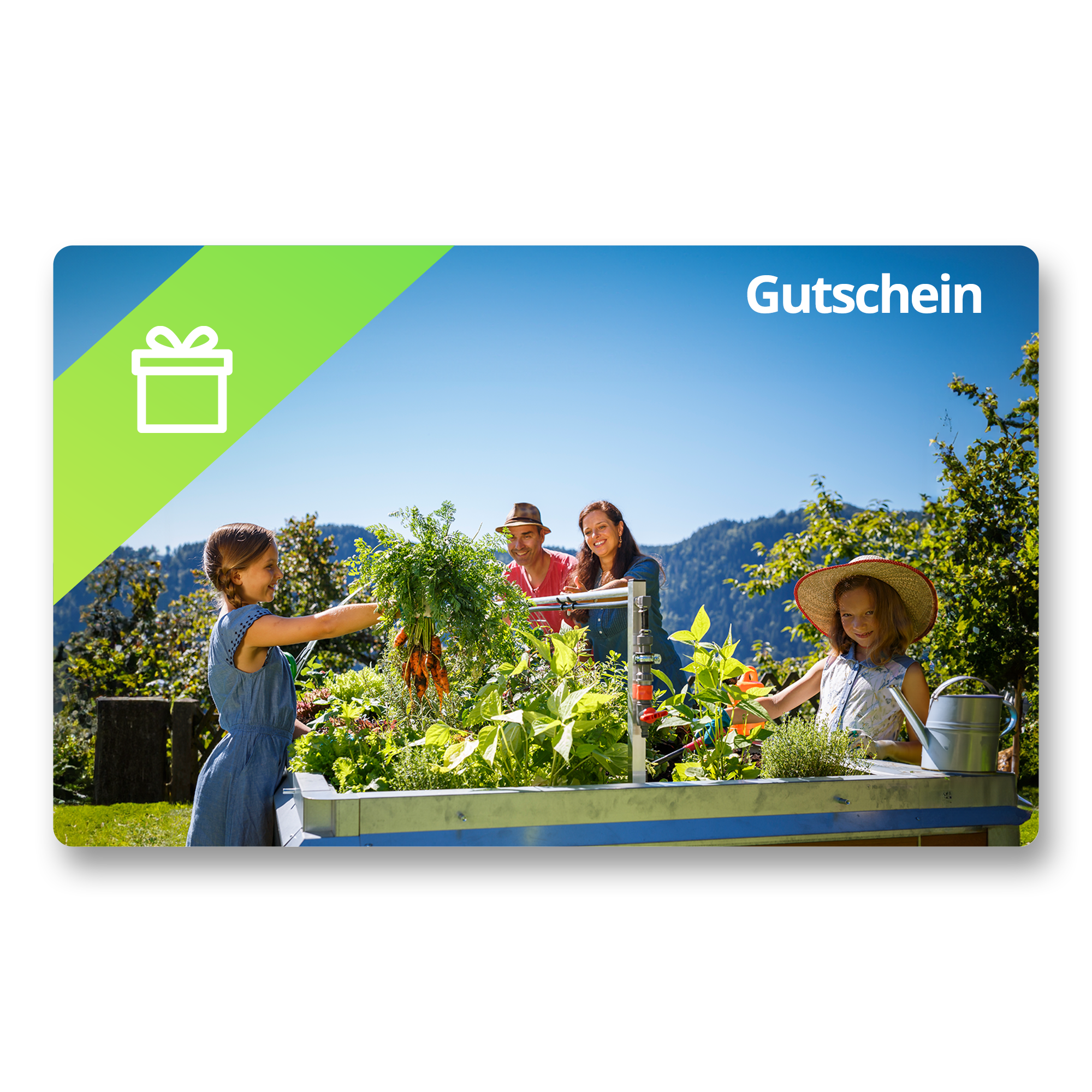FAQ
Generally
Our unique selling point is the high quality of our products: durable, thermally insulated for higher yields and individually configurable. In addition, our special cover allows the raised bed to be used all year round.
Metal raised beds are more durable and do not require bubble wrap. We use special stainless steel that does not cause aluminum oxide in the food and our materials last for decades, unlike wooden raised beds.
We offer various covers, irrigation systems, insect screens, vole screens, snail protection and much more.
We offer raised beds, tomato houses and chicken coops made of metal. Of course, we also have accessories (irrigation systems, sets, soil, etc.) in our range.
A raised bed should be placed on a flat and stable surface, such as a lawn.
A foundation is not required to set up a raised bed.
If you base your work on the height of your kitchen worktop, you should be able to do your gardening without any problems.
If you are handy, two people will need about 1.5 hours to assemble it.
The entire raised bed with accessories weighs about 150 kg. The heaviest individual part weighs about 25 kg.
Start with a layer of coarse woody material, followed by finer material, grass clippings, leaves and hedge trimmings. Cover this with a cardboard box if necessary and then fill with about 30cm of soil on top.
No, the raised bed would have to be disassembled again, as this is one of the first steps in the assembly process.
If you need a lawn strip or a base, please remember to order it from us before assembly. We are also happy to help you: https://hochbeet.com/pages/contact
Yes, this is possible without much effort.
Hold the rubber bands with hooks in your hands and stand on the short side of the raised bed. Attach the side part by hooking the rubber bands onto the upper cover slats.
Remove the defective rubber bands with scissors or a knife. Thread the new rubber band through to the stop (eyelet) and attach the enclosed eyelet to the end of the rubber band with pliers or a hammer.
Spread about 200 g of sheep's wool fertilizer in the raised bed and mix it lightly into the soil when you have newly created your raised bed.
Add 20 ml (2 caps) of EM Active to 10 liters of water and water the plants regularly with this solution.
Yes, upon request we can manufacture your raised bed according to your wishes.
Contact us: https://hochbeet.com/pages/contact
Yes, please let us know the inside width of your raised bed so that you can get the right irrigation system.
Yes, stop spraying in the fall, remove it from the raised bed and store it frost-free.
Place the net over the cucumber vines, pull it down at the sides and attach it to the long nuts.
We recommend using both the mouse grid and the mole cricket grid.
Yes, one plate holder set is enough for 5 top and 2 side cover plates.
Delivery
Shipping of our raised beds is free within Germany and Austria. Shipping costs for delivery to Switzerland are 249 euros.
You can find more information about other products here .
The delivery time is approximately 14 days from the order and receipt of payment. If there are any delays, you will be informed immediately.
Make sure the space for the raised bed is prepared and that someone is on site to receive the delivery.
Delivery is made by freight forwarder on a pallet to the curb.
“Curbside” delivery means that the package will be delivered to the nearest accessible road. Make sure you have help to transport the package from there.
Please check the package carefully upon arrival. If there is any damage, contact us immediately so that we can find a solution.
payment
We accept various payment methods, including credit card, PayPal, Apple & Google Pay, Klarna and many more.
Our customer service is available by phone and email. We will be happy to help you with any questions or concerns.
Care
1. Ants:
- Combating: Barriers made of cinnamon or baking soda.
- Prevention: Keep the raised bed clean.
2. Woodlice:
- Control: Remove wet leaves and plant parts.
- Prevention: Lay coarse sand or gravel on the surface.
3. Grubs:
- Control: Use nematodes.
- Prevention: Dig up the soil in spring and autumn.
4. Caterpillars:
- Control: Hand collection, use Bacillus thuringiensis.
- Prevention: Plant herbs such as dill or mint.
5. Lice:
- Control: Spray a mixture of water and dishwashing liquid or neem oil.
- Prevention: Use ladybirds and parasitic wasps, plant nasturtiums.
Additionally:
- Snails: Place copper strips around the raised bed or install our snail protection.
- Insect nets: Install raised bed covers to keep out flying pests
Planning:
- Choose plants that grow well together and have similar needs (light, water, nutrients).
- Plan a mixed crop to deter pests and make optimal use of the soil.
Stratification:
- Bottom layer: Coarse materials such as branches, twigs and wood chips, about 20-30 cm high. These ensure good drainage.
- Middle layer: Coarse compost or semi-rotted material, about 20 cm high. This layer provides nutrients and helps with water regulation.
- Top layer: Fine compost or potting soil, about 20-30 cm high. This layer is intended for the roots of the plants.
Plant selection:
- Edge planting: Low-growing plants such as lettuce, radishes or herbs.
- Middle zone: Medium height plants such as peppers, onions or strawberries.
- Back zone: Tall plants such as tomatoes, beans or corn.
Planting:
- Do not plant the plants too close together. Pay attention to the individual distances that each
plant needs.
- Plant deep-rooted plants (carrots, radishes) next to shallow-rooted plants (lettuce, spinach) to make optimal use of the space.
Irrigation:
- Ensure consistent watering, especially during the first few weeks after planting.
- An irrigation system can help to supply plants with water regularly and efficiently.
Care:
- Remove weeds regularly to keep plants healthy.
- Mulch the top layer with straw or grass clippings to retain moisture and prevent weed growth.
- Check the plants regularly for pests and diseases and act accordingly.
Yes, it is important to refill the raised bed in the fall if it has sunk. Here are the steps to properly refill the raised bed in the fall:
Removing old plant remains:
• Remove all remaining plant debris and weeds. This prevents pests and diseases from overwintering.
Loosening the soil:
• Loosen the top layer of soil with a digging fork or cultivator to improve aeration and facilitate water penetration.
Add compost:
Fill the raised bed with fresh compost or well-rotted manure. This provides important nutrients for the coming planting season.
Layer about 10-15 cm of compost on top of the existing soil.
Mix:
• Mix the new compost lightly with the existing soil to ensure an even distribution of nutrients.
Mulching:
• Cover the surface of the raised bed with a layer of mulch (e.g. straw, leaves or grass clippings). This protects the soil from erosion and helps retain moisture.
Optional: Foundation:
• You can also sow green manure plants such as clover, lupins or phacelia. These plants protect the soil from erosion, improve soil structure and add additional nutrients to the soil when dug in the spring.
These steps will keep your raised bed healthy and nutrient-rich, ready for the next
planting season.

